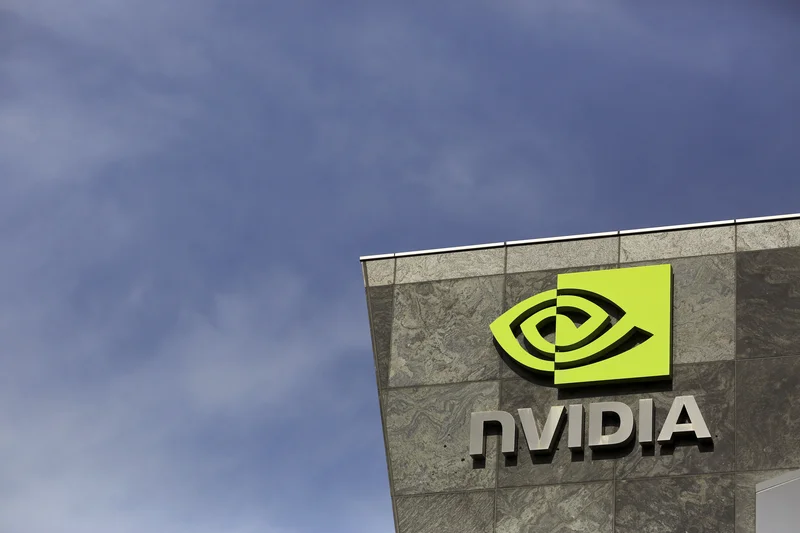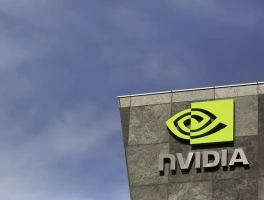Nvidia's AI Hype: Is the Stock Price Justified?
Nvidia's fiscal third-quarter 2026 earnings are about to drop (November 19th, after the bell), and the market's buzzing. The question isn't just if they'll beat estimates, but by how much, and whether that justifies the current valuation. Morningstar, for example, currently rates Nvidia a 3-star, fairly valued at $225 per share. That implies an equity value of $5.1 trillion. It also implies a fiscal 2026 price/adjusted earnings multiple of 50x, dropping to 30x in fiscal 2027. The devil, as always, is in the details.
The AI Infrastructure Gold Rush: Fact vs. Fiction
Nvidia's management is painting a rosy picture of AI infrastructure spending, projecting $3 trillion to $4 trillion per year by 2030. They even pointed to OpenAI deals totaling $1.4 trillion in potential build-out over the next few years. Let's be clear: "potential" is the operative word. How much of that $1.4 trillion will actually materialize? And more importantly, how much of that will flow directly to Nvidia? It's not a one-to-one relationship. Nvidia also hinted at $300 billion of AI infrastructure for calendar 2026. That's a big number, but it's also a hint.
The Morningstar report also touches on China. While Nvidia is likely working on selling into the region, the impact of geopolitical restrictions remains a significant unknown. The risk is not only present but it is a risk that can, and probably will, be a factor.
The Cloud Conundrum: CoreWeave and the Long Tail
Nvidia's reliance on major cloud providers is well-documented. What's less clear is the contribution from smaller cloud companies like CoreWeave and Lambda. Are these smaller players becoming a meaningful source of revenue, or are they just a rounding error? The answer to that question will significantly impact Nvidia's long-term growth trajectory. If Nvidia can successfully tap into this "long tail" of smaller cloud providers, it would diversify its revenue stream and reduce its dependence on a handful of mega-customers. The report doesn't offer solid numbers here – it's "interesting," but that's about it. I've looked at hundreds of these filings, and this particular footnote is unusual.

The elephant in the room is the increasing competition. Nvidia's customers, including Google, have a strong incentive to diversify away from Nvidia's GPUs. Google's TPUs (Tensor Processing Units) are a direct threat, and other companies are developing custom chips (ASICs) tailored to specific AI workloads. The question is, how quickly can these alternatives gain traction, and how much market share will Nvidia cede?
Financial Fortitude vs. Market Hype
Nvidia's balance sheet is undeniably strong. As of July 2025, they were sitting on $57 billion in cash and investments, compared to a relatively modest $8.5 billion in long-term debt. Semiconductor companies typically maintain large cash reserves to weather industry cycles, and Nvidia is no exception. However, the sheer size of Nvidia's cash hoard raises another question: what will they do with it? The report suggests share buybacks are the most likely option. The dividend is "virtually immaterial." In other words, don't expect a significant payout anytime soon.
The biggest risk to Nvidia's valuation, according to Morningstar, is the "nascent nature of the AI market." This is analyst-speak for "we don't really know what's going to happen." Nvidia's dominance in AI model training is undisputed, but its position in AI inference (running the models) is less secure. The $225 fair value estimate implies a fiscal 2026 price/adjusted earnings multiple of 50 times. That's a hefty premium, and it hinges on Nvidia maintaining its leadership in a rapidly evolving market.
Peter Thiel’s hedge fund dumping its Nvidia stake adds another layer of intrigue. While the reasons behind this move remain opaque (details are scarce), it's a data point worth considering. Is Thiel seeing something the rest of the market is missing? Was it a move to take profits? Or was it a shift in strategy?
The AI Bubble Needs a Reality Check
The market is pricing in near-perfect execution for Nvidia. The $3 trillion to $4 trillion AI infrastructure spending projections are treated as gospel, and the competitive threats are largely ignored. While Nvidia is undoubtedly a leader in the AI space, its current valuation is detached from reality. A correction is inevitable.

